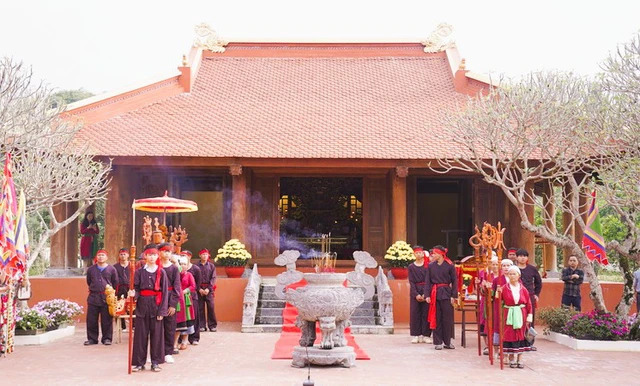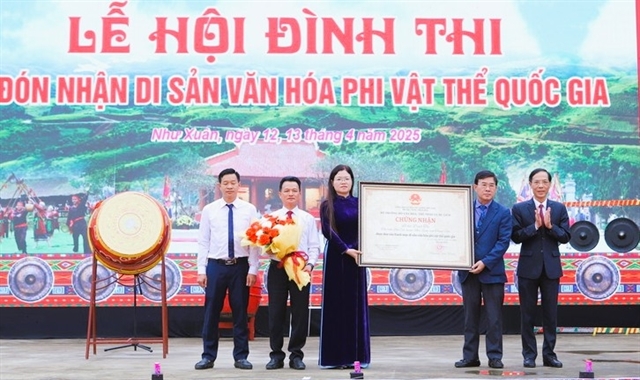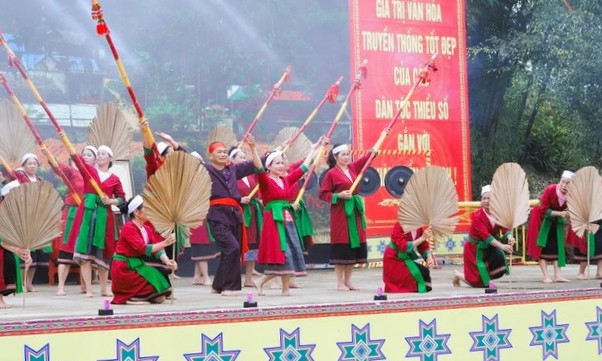 Life & Style
Life & Style

THANH HÓA — The Thi Temple Festival, dedicated to those who contributed to the Lam Sơn uprising in the 15th century, has officially been recognised by the Ministry of Culture, Sports and Tourism as national intangible cultural heritage.
 |
| The Thi Temple honours those who contributed to the Lam Sơn uprising in the 15th century. Photos nld.com.vn |
A ceremony to receive the certificate acknowledging the festival as national intangible cultural heritage was held alongside the festival's opening ceremony in Thanh Hóa Province's Như Xuân District on Sunday.
Built in the 16th century, the Thi Temple is located in the former Sẹt Village (now Trung Thành Village) in Yên Cát Town, Như Xuân District. Historical records reveal that in the early years of the Lam Sơn uprising (1416-1427), a local man, Lê Phúc Thành, supported the resistance led by national hero Lê Lợi to defeat northern invaders. After playing a significant role in the successful Lam Sơn uprising, Thành was granted land in Sẹt Village and was appointed as the official responsible for overseeing the region.
 |
| Representatives of the Ministry of Culture, Sports and Tourism, along with leaders of the Thanh Hóa Provincial People's Committee, presented a certificate recognising the Thi Temple Festival as national intangible cultural heritage to the representatives of Như Xuân District. |
As part of his duties, Thành gathered and recruited local militia and residents to cultivate the land, transforming dense forests and wild marshes into prosperous villages. This brought economic wealth and improved the lives of the villagers. After his death, his descendants and the district's residents revered him as the village's guardian spirit.
In 1995, Thi Temple was recognised as a provincial historical and cultural site. By 2024, the Thi Temple Festival, held annually in the third lunar month, was declared national intangible cultural heritage by the Ministry of Culture, Sports and Tourism.
The festival commemorates the contributions of ancestors in building communities and preserving cultural heritage. It plays a role in teaching traditional values, emphasising the importance of protecting cultural heritage and fostering cultural life among ethnic groups in the western region of Thanh Hóa.
 |
| Artists stage a performance at the Thi Temple Festival. |
At the ceremony to receive the certificate, Vice Chairman of the Thanh Hóa Provincial People's Committee Đầu Thanh Tùng stated that including the Thi Temple Festival on the list of national intangible cultural heritage recognises a vibrant cultural legacy. It honours the community's and artisans' persistent efforts across generations in preserving, protecting and promoting the value of heritage. He highlighted the importance of passing down these traditions between generations and practicing them in contemporary life.
The event also served as an opportunity for the people of Như Xuân District to express gratitude to their ancestors, whose creative talents and efforts preserved this precious heritage, enabling it to be honoured to this day and continue into the future.
Tùng emphasised that preserving and developing the Thi Temple Festival is not just the responsibility of artisans and local residents, but of the entire community of ethnic groups in the district. He urged collaboration with relevant organisations to transform the heritage into an asset, turning its potential into a resource for local economic development and improving the people’s material and spiritual lives. VNS




